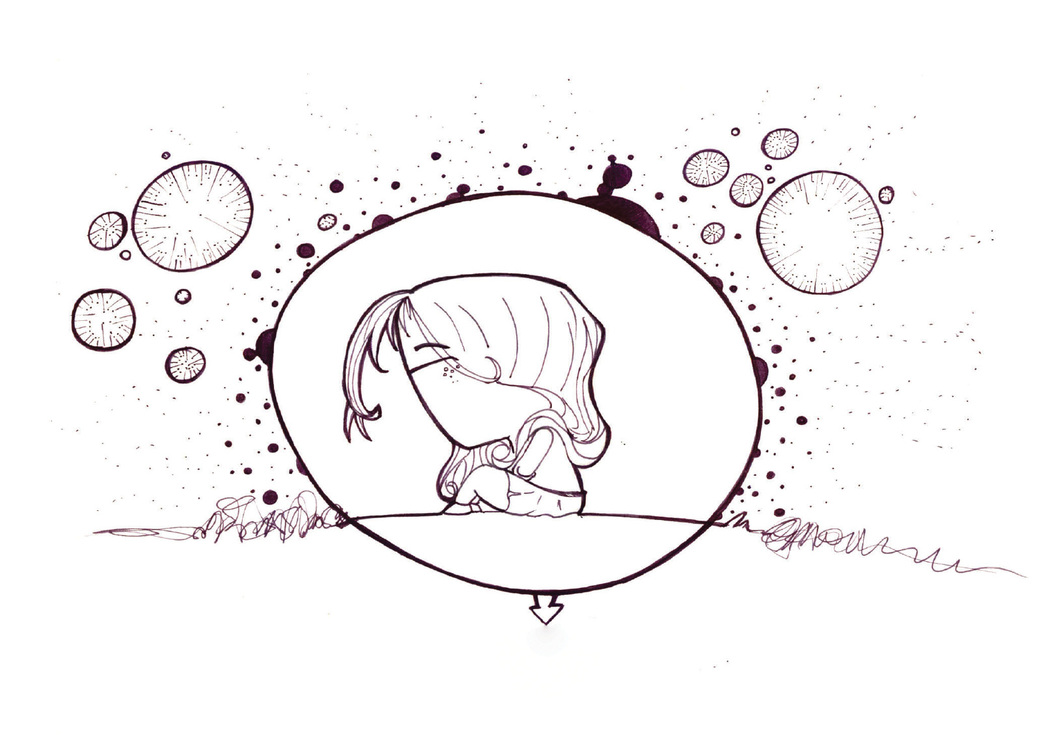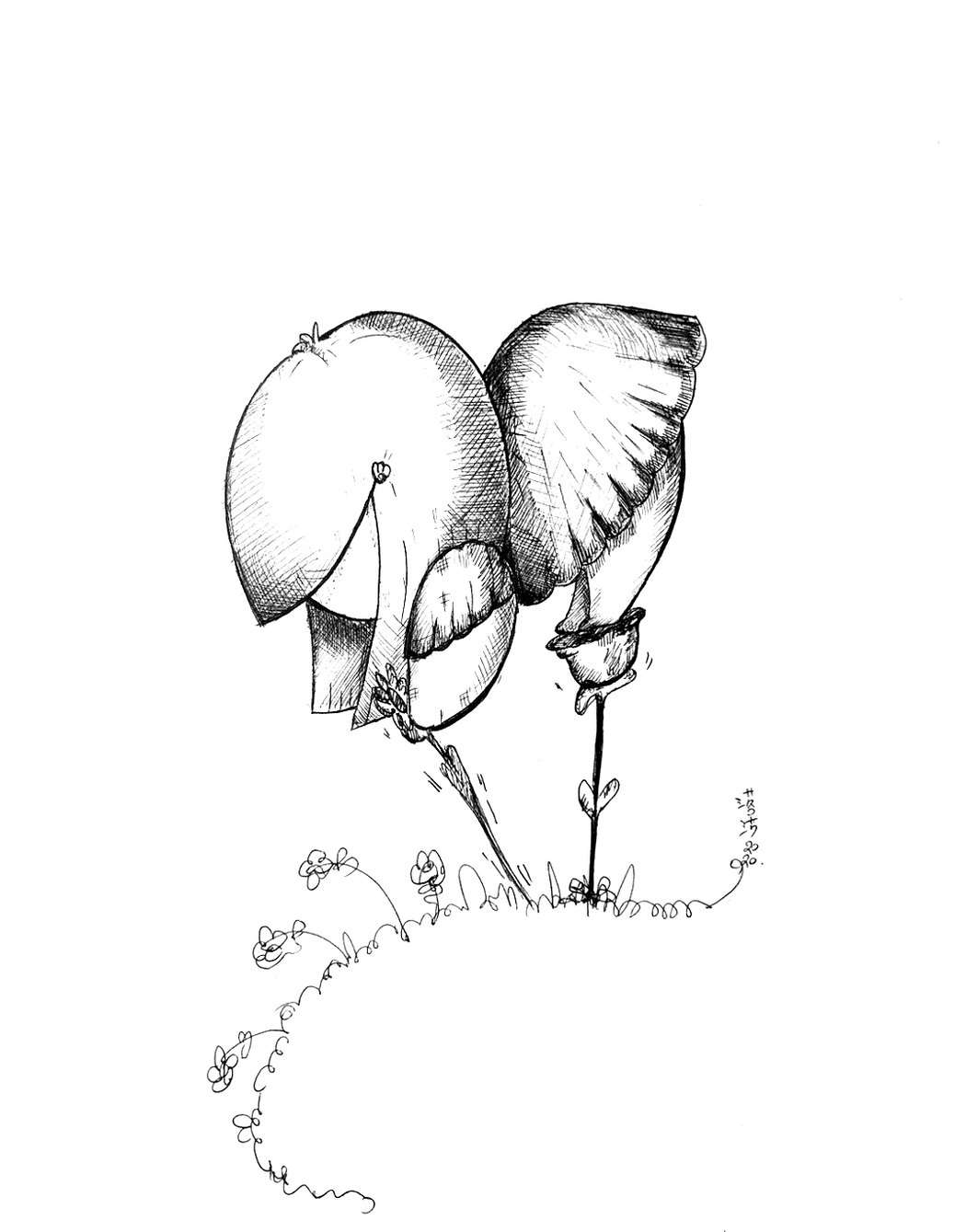Flavia Luck
Year of birth: 1984
Where do you live: Shanghai, China
Your education: Phd candidate at Shanghai University Academy of Arts
Describe your art in three words: vulnerable, healing, reflective
Your discipline: Design Science
Website | Instagram

Can you share more about the inspiration behind your ‘Hello 莎莎 (shasha)’ series and how it relates to your personal experiences?
Sure. Hello 莎莎 (shasha) represents myself in those moments of vulnerability in which I feel closer to my inner child. I am from Argentina, but I moved to China a while ago, and most of the works that belongs to this series approached topics like loneliness, nostalgia and feelings alike that have arisen from this experience, but from a child perspective. It is a form of healing exercise in which I reflect about how the present impacts in the way I perceived reality and how it changes once I analyze it from an innocent perspective.
How do you approach the concept of nostalgia in your work, and what emotional response do you hope to evoke from viewers?
Nostalgia is a topic that I have been researching lately. The globalized world and the fast pace of life brings along different forms of nostalgia that coexist. For example, the elders long for the past that will not come back and the younger people for the future that will not be. Both of them are related with the feeling of loosing, particularly hope. In my work, “nostalgia” is portrayed as the moment in which the character realizes that something is no longer there, leading to change. And because it is showcase from the eyes and the heart of a child, it is a moment of discovery. Contrary to adult nostalgia, it is by discovering that they gain something and, by feeling likewise, it aids the nostalgia.
My work intends to emotionally emphasize with the viewers. It would be lovely if they could feel relief or understood while looking at my work.
 Flavia Luck | Stillness | 2002
Flavia Luck | Stillness | 2002
Your work has a distinct use of colors and shapes to convey vulnerability and healing. How do you select the color palettes for each piece?
I am a fan of the Japanese kawaii (可愛い) aesthetic and most of my inspiration comes from it.
Kawaii portrays vulnerability is such a sweet way that sometimes we got lost in it, and that is a feature I like to bring to my work. I am really fond of working with simple and organic shapes and persuasive color palettes, because that is how I see feelings in my mind. Having said that, color is a key part in composition, particularly while working with simple shapes. The color provides a soul to the character and mood to the story. Therefore, the color selection is an strategic decision that involves a negotiation between how I see the final piece and what is really becoming of it.
What role does character design play in your art? How do you create characters that resonate with your audience?
For me, character design is a space in which I can play whoever I want to be. It is where I detached myself from the idea of me and play to be “other(s)”. Just like a role play, my characters can represent situations, emotions or even people I randomly meet.
How do I create characters that resonate with my audience? That is a difficult question. In this experimental path of role playing, it is difficult to know beforehand whether the audience will engage or not with the character and its message. So I am always hoping for the best. Though I do address topics that I believe are representative for my audience, most of the time I do not know what is going to happen. But, I like the mystery. It keeps me motivated.
 Flavia Luck | Not Alone | 2022
Flavia Luck | Not Alone | 2022
You combine game theory and cultural hybridization in your research. How do these concepts influence your artistic practice?
Indeed. We live in a ludic world. If we have a look around, almost every aspect of our live has been intersected by play. And globalization, like I stated before, is leading to culture exchange. It is part of our reality and of course, impacts not only the way we understand and relate to reality, but also art. The use of kawaii features in my work are a clear statement of how culture hybridizes: recalling an aesthetic style born in the latest ´90s in Japan and reinterpreted through the eyes of an Argentinean. As regards game theory… well, we are always playing. And with character design, it is always a role play.
Can you describe the process of creating your mixed-technique pieces? How does this technique contribute to the overall impact of your work?
I mainly use traditional techniques, which are the ones that I learned while I was a child. I love painting with different brushes and experiment with acrylics and watercolors. For the last details I usually use color pencils and black markers. These techniques might look simple, but they let me incorporate a part of me on each trace I leave.
 Flavia Luck | Screenshot | 2024
Flavia Luck | Screenshot | 2024
In your project, you mention the healing of the “child that lives inside of our hearts.” How do you express this through the form and character of your art?
My characters embody innocence, sometimes resilience, and emotional complexity, balancing vulnerability with joy. Their expressions and postures often reflect a journey—whether curiosity, healing, or self-discovery—mirroring the emotional process of reconnecting with one’s inner child. The narratives embedded in my work also encourage introspection and play, inviting the audience to engage with the piece not just visually but emotionally, fostering a sense of care for their own inner child.

Leave a Reply